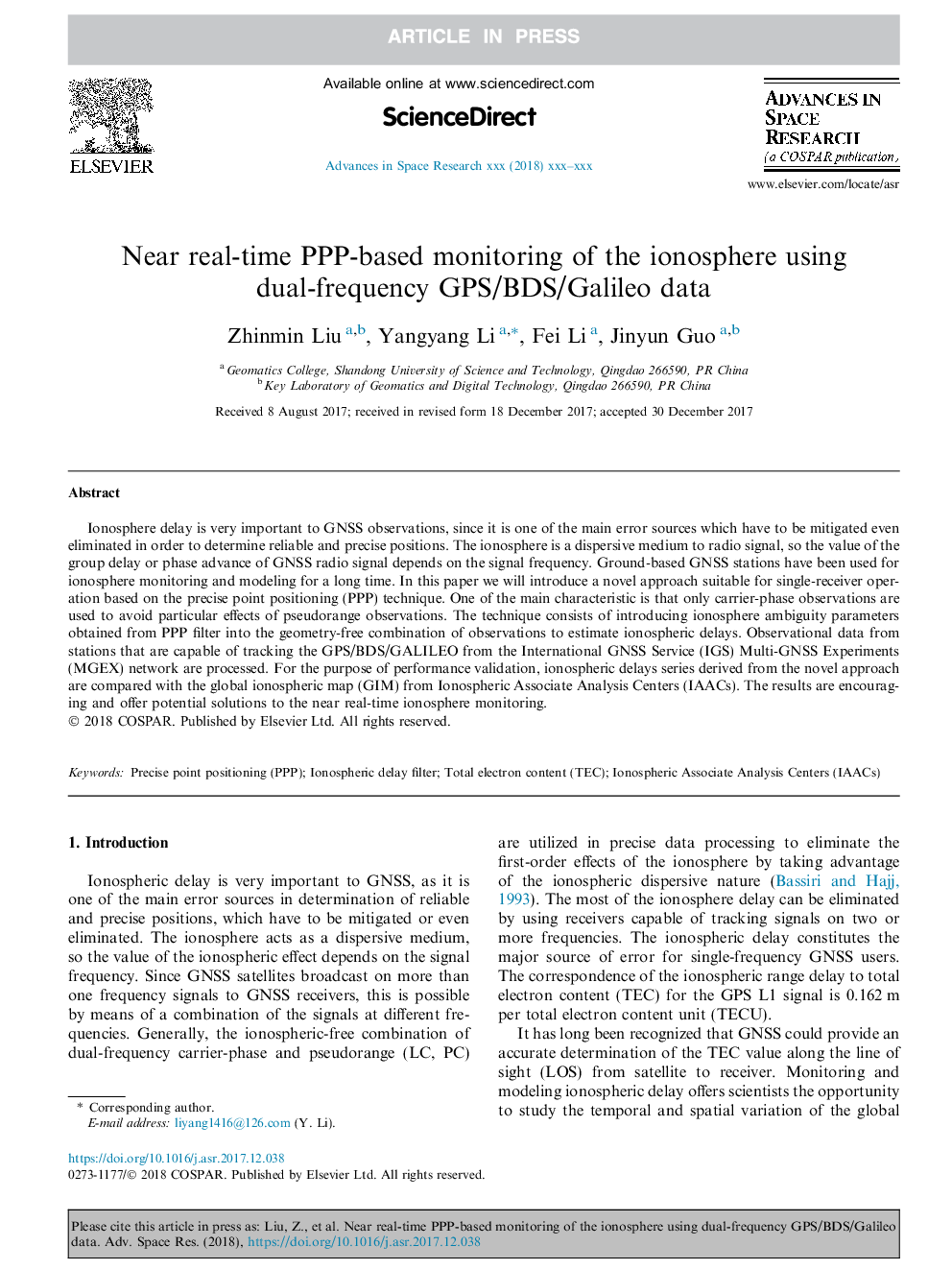| Article ID | Journal | Published Year | Pages | File Type |
|---|---|---|---|---|
| 8132166 | Advances in Space Research | 2018 | 9 Pages |
Abstract
Ionosphere delay is very important to GNSS observations, since it is one of the main error sources which have to be mitigated even eliminated in order to determine reliable and precise positions. The ionosphere is a dispersive medium to radio signal, so the value of the group delay or phase advance of GNSS radio signal depends on the signal frequency. Ground-based GNSS stations have been used for ionosphere monitoring and modeling for a long time. In this paper we will introduce a novel approach suitable for single-receiver operation based on the precise point positioning (PPP) technique. One of the main characteristic is that only carrier-phase observations are used to avoid particular effects of pseudorange observations. The technique consists of introducing ionosphere ambiguity parameters obtained from PPP filter into the geometry-free combination of observations to estimate ionospheric delays. Observational data from stations that are capable of tracking the GPS/BDS/GALILEO from the International GNSS Service (IGS) Multi-GNSS Experiments (MGEX) network are processed. For the purpose of performance validation, ionospheric delays series derived from the novel approach are compared with the global ionospheric map (GIM) from Ionospheric Associate Analysis Centers (IAACs). The results are encouraging and offer potential solutions to the near real-time ionosphere monitoring.
Related Topics
Physical Sciences and Engineering
Earth and Planetary Sciences
Space and Planetary Science
Authors
Zhinmin Liu, Yangyang Li, Fei Li, Jinyun Guo,
